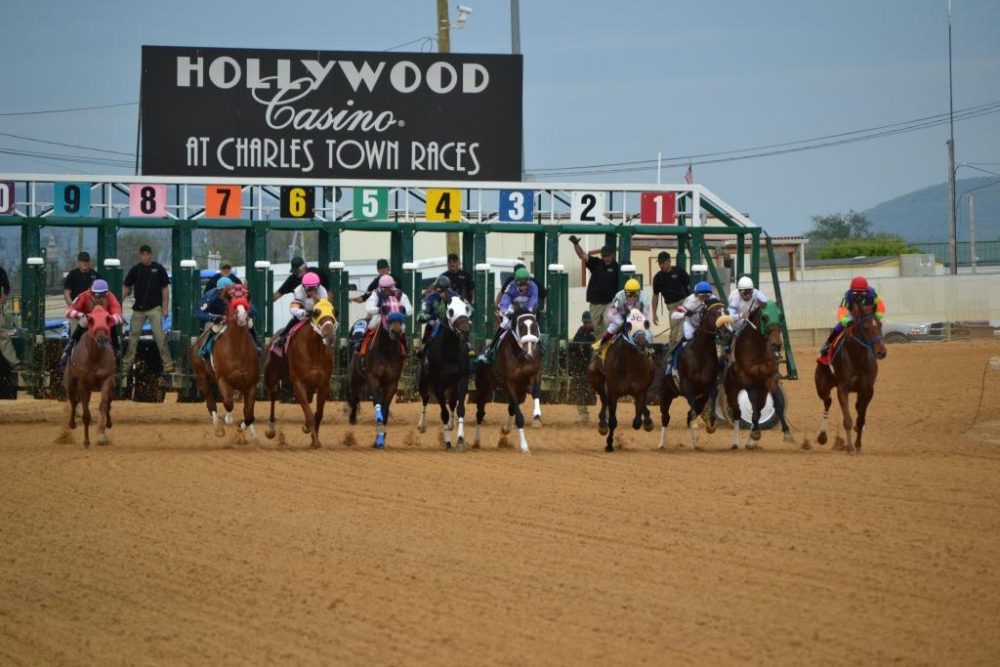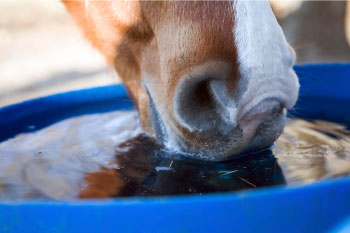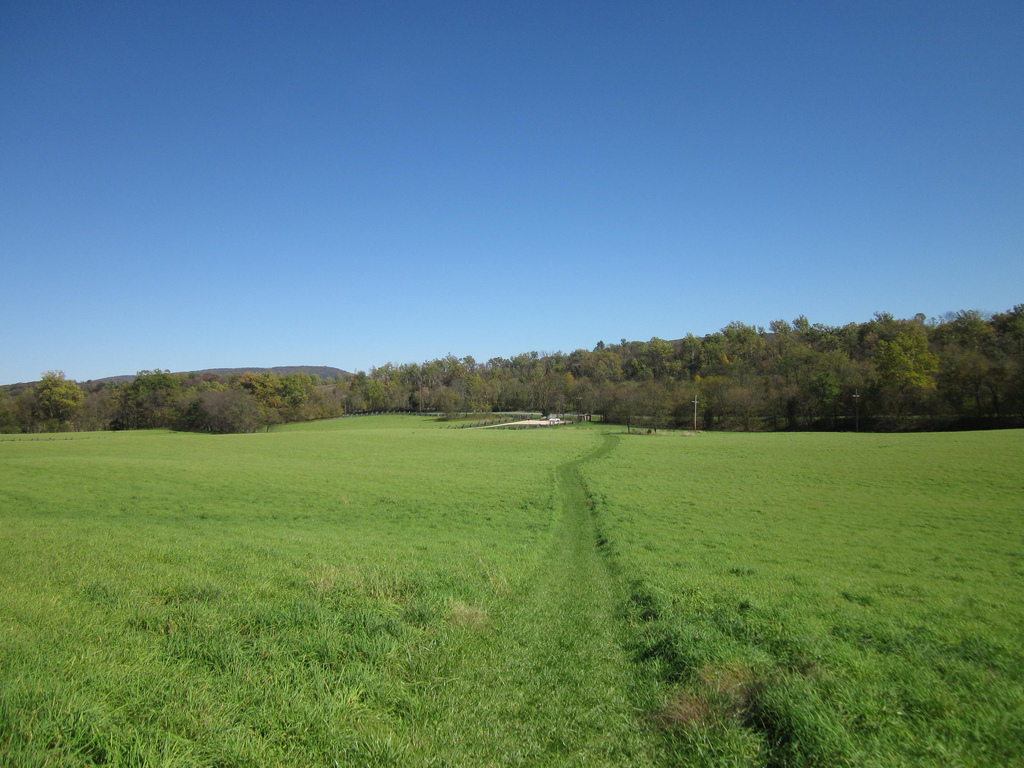The Economic Impact of Rezoning this Area – Equine Industry
An Industry Hundreds of Years Old and Still Thriving
Ranson’s proposed zoning change presents a significant risk to the equine industry in Jefferson County. The type of industry that would be allowed by the proposed zoning change in this location would jeopardize horse health and threaten the long-term viability of the equine industry in the county.

The site of the proposed rezoning is less than six miles from Charles Town Races, a thoroughbred track with a year-round meet. There are also several breeding, training, and rehabilitation farms and facilities within the six-mile radius of the site in Ranson. Industrial activity typically emits a multitude of hazardous air pollutants capable of dispersing to sites several miles away, even when plants comply with permitted limits. It is therefore likely that pollutants from industrial activity at the proposed site in Ranson will have the potential to affect horses stabled several miles away.
Horses appear to be more sensitive to inhaled particulate matter than humans. According to a recent study published in the journal of Veterinary Internal Medicine (13), horses are 15 times more sensitive to inhaled particulate matter than humans. Inhaled particulate matter can cause inflammation in horses that negatively affects performance even at subclinical levels i.e. levels undetectable without advanced diagnostics. Inhaled particulate matter is also a known contributor to the development of inflammatory airway disease (IAD) (2). IAD is a chronic airway disease that can affect horses long after their racing career is over. According to the West Virginia Department of Environmental Protections (WVDEP) air permit, the Rockwool plant in Ranson is permitted to emit 250.87 tons of particulate matter per year into the air (1).

While there is little research on how specific air pollutants affect horses, there are several observations that can be made on the effects of pollution on humans to infer potential impact on horses. Horses exposure times to pollutants are much longer when compared to typical human models because horses live outside. Horses that
are housed near the site in Ranson and worked in this area year-round will also be continually exposed to air pollution. Additionally, horses must perform at maximal intensity exercise while typical models looking at human sensitivity to pollution are not done at maximal exercise. These comparisons suggest that horses will likely experience detrimental effects at lower levels of air pollution than humans.
The primary concern about air pollution is that increased levels of pollutants will increase inflammation in horses’ lungs. Even small, subclinical amounts of inflammation in the lungs of horses negatively affect performance (2,3,4,5,10). This inflammation can also cause increased recovery times following racing (6,10). Reduced performance and training interruptions can lead to higher risk of injury, reduced winning average, fewer yearly starts, lower yearly earnings, shortened career length, fewer lifetime starts, reduced lifetime earnings, and reduced quality of life (2,7,8,10). Each of these situations will lead to decreased return on investment, decreased cash flow, and decreased overall earnings for owners, trainers, and breeders with horses at Charles Town Races and in nearby areas.
While racing is usually a thoroughbred’s first career, it is rarely their last. Some racing horses go on to be breeding stock, while others will have successful careers as sport horses. However, if they are unsound from injury or respiratory disease, they can be difficult to manage as breeding stock or unfit for a career as a sport horse. This affects the horse’s quality of life and also places a burden on the industry by reducing the lifetime productivity of each horse.

Another concern related to the proposed rezoning in Ranson is the risk of groundwater contamination as a result of industrial activity. If local groundwater becomes contaminated, owners will not know until their animals are sick. Symptoms are likely to be non-specific and insidious in onset, and the underlying cause may be difficult to determine without extensive veterinary intervention. It may even become necessary for horsemen to periodically test water sources to determine if they are contaminated. All of this adds expense and uncertainty to an industry that already deals with large inherent risks.
The actual occurrence of ground water contamination would be devastating for Jefferson County’s equine industry. Breeding, raising, training, and even maintaining horses would be absolutely cost prohibitive on utility-provided water. For both geographic and financial reasons, it is simply impossible to think that the industry could use public or private utility-provided water if industrial activity fouled the local groundwater.

The equine industry in Jefferson County is hundreds of years old. It is not worth risking this historic and economically valuable industry by rezoning for industrial companies like Rockwool. An economic impact study of the Charles Town Thoroughbred Horse Racing Industry on Jefferson County’s economy found that the spending by owners, breeders, and trainers of the equine industry directly contributes $79.4 million to the county each year. Out-of-state owners, breeders, and trainers spend more than $50 million in Jefferson County every year. The value of total business volume in Jefferson County is $191 million each year (9). These numbers do not include the effect of the handle (betting) or the casino which totals over $63 million per year. Rockwool promises it will provide 120 jobs (WVEDA bond agreement of May 2019). To bring in jobs from companies like Rockwool, we would have to risk over $200 million in local business volume each year. Is that worth it?
The equine industry offers so many benefits that the industry in the rezoned area would not. For example, the equine industry supports local agriculture by providing a market for agricultural goods such as straw. The robust straw market supported by owners, trainers, and breeders allows for a third cash crop to be produced from one field in a year. This symbiotic relationship is an example of how local consumption of locally produced agricultural products has multiplicative benefits to the local economy (12). Through pastureland and support of local agricultural goods, the equine industry protects and preserves the open spaces that give our county its bucolic quality and help attract tourists. Through the breeders’ incentive programs, the equine industry offers unique opportunities to draft state funds back to Jefferson County. Through the handle, its support of local agriculture, its stewardship of pastureland, and its enabling of spending by owners, breeders, trainers, the equine industry brings in tens of millions of dollars from outside the state into Jefferson County each year.
The equine industry provides jobs for a broad cross-section of the public. This industry offers individuals of any educational background a variety of paths to achieve a good middle-income living. Many jobs allow individuals to pursue apprenticeships or on-the-job training rather than requiring a costly college education. This flexibility allows for greater lifetime earnings and improved educational debt-to-earnings ratio for these workers. The equine industry’s support of on-the-job education is yet another example of how Jefferson County has already embraced practices only now being recognized and promoted in the rest of the country. The equine industry also provides opportunities for non-traditional workers by offering job opportunities to those who may not be employable by larger corporations. This industry provides a variety of full-time, part-time, flexible, and pick-up work. Encouraging this type of flexible job ecosystem helps create a healthy economy with broad participation in employment and consumption.
Rezoning this area of Jefferson County for Special District Industrial will allow in entities whose activities are harmful to our equine industry. The losses incurred by the equine industry would far outweigh any benefits derived from industries occupying the rezoned area. Sacrificing the long-term viability of one of our oldest and most productive industries for a net loss in business volume and economic value just does not make good sense for the Jefferson County economy.
Endnotes
1. https://dep.wv.gov/daq/Documents/March%202018%20Drafts%20and%20IP R/037-00108_IPR_R14-0037.pdf;
2. Couëtil LL, Cardwell JM, Gerber V, Lavoie JP, Léguillette R, Richard EA. Inflammatory airway disease of horses—revised consensus statement. Journal of veterinary internal medicine. 2016 Mar;30(2):503-15.;
3. Richard EA, Fortier GD, Pitel PH, Dupuis MC, Valette JP, Art T, Denoix JM, Lekeux PM, Van Erck E. Sub-clinical diseases affecting performance in Standardbred trotters: diagnostic methods and predictive parameters. The Veterinary Journal. 2010 Jun 1;184(3):282-9.;
4. Holcombe SJ, Robinson NE, Derksen FJ, Bertold B, Genovese R, Miller R, Rupp HD, Carr EA, Eberhart SW, Boruta D, Kaneene JB. Effect of tracheal mucus and tracheal cytology on racing performance in Thoroughbred racehorses. Equine veterinary journal. 2006 Jul 1;38(4):300-4.;
5. Sanchez A, Couetil LL, Ward MP, Clark SP. Effect of airway disease on blood gas exchange in racehorses. Journal of veterinary internal medicine. 2005 Jan;19(1):87-92.;
6. Couëtil LL, Hoffman AM, Hodgson J, Buechner‐Maxwell V, Viel L, Wood JL, Lavoie JP. Inflammatory airway disease of horses. Journal of veterinary internal medicine. 2007 Mar;21(2):356-61.;
7. Hernandez J, Hawkins DL, Scollay MC. Race-start characteristics and risk of catastrophic musculoskeletal injury in Thoroughbred racehorses. Journal of the American Veterinary Medical Association. 2001 Jan 1;218(1):83-6.;
8. Auer JA, Stick JA. Equine Surgery 4th edn, Saunders, 2012.;
9. Witt T, Meinert T. The Economic Impact of the Charles Town Thoroughbred Horse Racing Industry on the Jefferson County a. 2011
10. Anderson JO, Thundiyil JG, Stolbach A. Clearing the air: a review of the effects of particulate matter air pollution on human health. Journal of Medical Toxicology. 2012 Jun 1;8(2):166-75.
11. Bowen E, Deskins J. The Economic Impact of the Thoroughbred and Greyhound Racing Industries on West Virginia’s Economy 2. 2014
12. Masi B. The 25% shift: The benefits of food localization for Northeast Ohio and how to realize them. Cleveland-Cuyahoga County Food Policy Coalition; 2010.
How You Can Help
Educate yourself and others
Read the detailed information on our website and share with others. Knowledge is power.
- The Background on Zoning in Ranson
- Karst Hydrogeology Concerns
- Heavy Industry Near Schools
- Negative Effects On Local Economy
- Heavy Industry Incompatible With Ranson’s Comprehensive Plan
- Environmental Discrimination
Donate to support our efforts
If you are able to, please support our ongoing legal efforts with a fully tax deductible donation.

